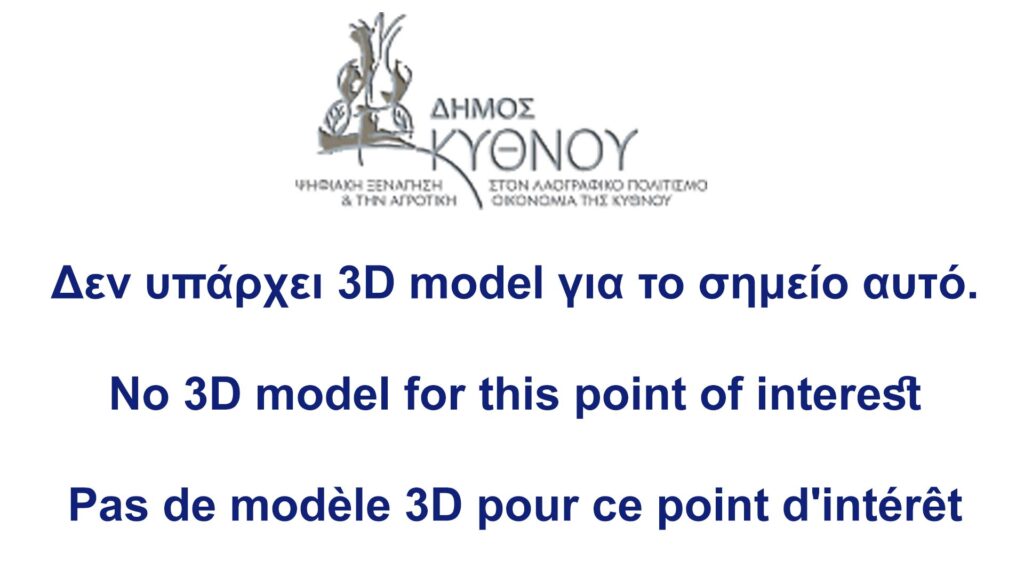Ceramics in Kythnos
Pottery and ceramics flourished on Kythnos from the mid-19th century until the late 20th century, with the arrival and permanent settlement of potters from Sifnos (tsoukalades) on the island. The area of Sifnios was not named by accident, as it is rich in excellent quality clay and is where potters mine for it.
During the 1850-2001 period, there were eleven ceramics kilns, specifically, in Dryopida, Mathias, Lefkes, Kanala, Agios Dimitrios, and Merihas. The pottery workshops located near the beaches also developed exports activities by the late 50s. Kythnos ceramics have travelled to several island regions, such as Syros, Serifos, Milos, and even distant Crete, thus developing a type of barter economy between the islands. Potters were often paid in kind, trading their ceramics for products transported on the caiques, for example, oil from Crete, soap from Milos, and furniture from Syros.
Ceramics in the daily lives of the residents of Thermia
Ceramics held a dominant position in the past, both as utilitarian items in daily life, as well as in customs and celebrations.
On New Year “as soon as the sun rose, they poured out the water from the jug and went to the well to fill it with fresh water, so that they would be cool for the rest of the year”.
In spring, before cheese making activities commenced, the animal farmers offered the lords and the poor of the village milk in the kourgialos, a clay vessel used to transport exclusively milk. The beneficiary would send the ceramic back unwashed, after pouring in some sugar.
The use of ceramics is also observed in customs relating to weddings, christenings, births, and deaths, as well as in the custom of the removing ceramics from the kiln (xekaminiasma ). When the kiln went out and the “arch”, the entry to the kiln, was broken, “the potter would take a ceramic, break it on the ground and say: “May they all follow the first!” Namely, he was wishing that all the new ceramics break quickly, so that they would produce more and make more sales.
The Pottery Workshop of Milas
Dryopida on Kythnos is a village with a tradition in ceramic art. The tiled roofs of the houses, an unusual sight in Cycladic islands, bear witness to this activity.
You are in the old centre of the village. This is where you would have found the town hall, the aqueduct, and the largest pottery workshop: the pottery workshop of the Milas family. The family’s potters represent 6 consecutive generations that have worked here since 1850, meeting the needs of the village and Chora. They mainly construct jugs for holding water, pselia (beehives), roof tiles, and other useful objects.
In the early 20th century Antonis Milas taught the craft to his son Manolis. He gave him the kiln in Dryopida and built a second kiln on the southern side of the island, in Agios Dimitrios, where he constructed the first rectangular kiln of greater capacity. Manolis was succeeded by his son Giannis (1917-), who travelled to Athens for a short time to improve his technical knowledge. He then returned to the island, where he more systematically organised the pottery workshop of Dryopida and served his craft until he was 80 years old. We should also mention his wife, Katernio Mila, who is one of the few women to have worked in kilns. Their son, Manolis, the fifth generation, modernised the kiln in the 70s, constructing a new tank (karouta) and installing an electric mechanism with a propeller for the production of clay. Furthermore, he replaced the laborious pedal operated wheel with an electric one, although he still preserved the traditional firing of ceramics. Later, his son, Manolis, a representative of the sixth generation, distinguished himself through his creative skills and his artistic flair, with his ceramics standing out for their well-crafted forms.
Young Giannis ends the long history of ceramic activity on Kythnos, as he is the last potter on the island.
“There was once a man with a kiln, like Giannis Milas has now. When that man was removing the ceramics from his kiln, an old lady went and stole a little pot and hid it in her armpit. But Lazaros saw her steal it. So he went up to her, he smiled, and he said: Old woman, you are made of dirt and you are stealing dirt” (Narration: Katernio Martinou)


















